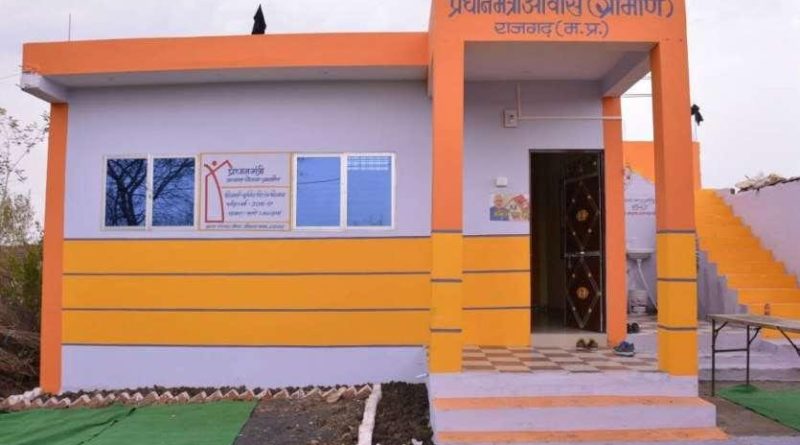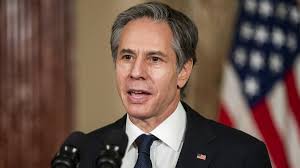CSE calls for changing housing sector policy in post COVID-19 India
The current public health emergency has reinforced the fact that housing sector policy and interventions
will have to change in the post-pandemic period for healthy living, says Delhi based Centre for Science and Environment in a statement. As cities under lockdown to combat the pandemic, liveability and thermal comfort of houses of all income classes have hogged attention. While trapped stale air in ill-designed thermally uncomfortable air-conditioned houses can foster infectious diseases, overcrowding in lower income households with no ventilation creates more risks for the urban poor, CSE says. The current public health emergency has reinforced the fact that housing sector policy and interventions will have to change in the post-pandemic period for healthy living.
This has emerged from the recent analysis of the housing sector carried out by CSE. Lessons drawn from the ongoing implementation of affordable housing programmes like the Pradhan Mantri Awas Yojana for urban areas(PMAY-U) and from the reviews of the design and performance of affordable housing units at the state level have been captured in this new policy brief — Beyond the Four Walls of PMAY: Resource efficiency, thermal comfort and liveability in the affordable housing sector. The verticals of the PMAY-U programme represent different types of housing provision approaches, including affordable housing delivered by state governments in partnership with the private sector; beneficiary-led construction or self-construction; credit-led housing; and in-situ slum development. The experiences with each of these have thrown up several lessons that are relevant for the pandemic and post-pandemic phases. This reinforces the need for designing buildings and neighbourhoods for liveability, thermal comfort and resource efficiency. This pandemic, for instance, has raised huge concerns around the potential risk in mechanically cooled buildings. Scientists have said that even if a high summer outdoor temperature does manage to diminish the virus, mechanically cooled indoor temperatures and the air ducts of centrally air-conditioned buildings may enable the virus to thrive. In fact, anticipating risk, the COVID-19 Task Force and the Indian Society of Heating, Refrigerating and Air Conditioning (ISHRAE) have even released a guideline booklet that recommends maintaining of reasonably high levels of humidity, high rate of air change, and higher air temperature, among other things. At the same time, social distancing, which is needed to stay safe, is virtually impossible in the poorly designed small spaces in housing units of low-income groups. The migrant crisis has also shown how current approaches to housing provisions for the poorer sections need to change. Moreover, the overall hygiene of neighbourhoods in terms of access to water, sanitation and waste management requires most decentralised and efficient municipal services and decentralised resource and waste management systems to control the exposure to risk. Access to clean environment will have to be universal to protect all. Achieving liveability goals while addressing the housing crisis: India has to achieve the goals of health and liveability and thermal comfort within the current housing crisis. While the latest estimates of the Ministry of Housing and Urban Affairs (MoHUA) puts the national housing demand at 11.2 million (lowered from 20 million five years ago), unofficial estimates report a higher housing demand. Also consider the fact that close to 14 million households live in urban slums under unliveable conditions. According to the Census of 2011, India is adding around four million people to its slums every year. In current times of social distancing, crowded dwellings can be a bigger threat to health. The Technical Group on Urban Housing Shortage has estimated that around 80 per cent of the nation’s housing demand comes from congestion or overcrowding in houses. A house is defined overcrowded in India when a married couple does not have a separate room. To this is added homelessness, building rejection, and non-serviceability of buildings. While standardising, the criteria for housing demand assessment include health and liveability criteria to ensure access for all to adequate, safe and affordable housing. normal affordable housing must be designed for liveability, thermal comfort and resource efficiency: The current concern over thermally uncomfortable building, which increases air-conditioning usage and the risk of infections, has once again brought to the forefront the need to design buildings for thermal comfort and to minimise air-conditioned hours. Out of the total approved projects under PMAY-U, 34 per cent are under the ‘Affordable Housing in Partnership’ that the private sector is delivering (with support from the government). But nearly the entire focus is on speed and ease of construction and material choices. It is now necessary to link these subsidies and incentives with performance of the housing stock to ensure quality and liveability of the houses. India’s Cooling Action Plan has categorically stated the goal of ‘thermal comfort for all’. This needs to be integrated with the requirement of affordable housing. While planning for improved energy efficiency in buildings, it is also important to target for improved thermal comfort through material choices, designs and orientation. Thermal comfort is defined by parameters like temperature, ventilation and relative humidity in India as per the National Building Code (NBC). Interestingly, the World Health Organization (WHO) defines the same parameters for healthy housing. To demonstrates has simulated sample PMAY-U housing for thermal comfort and day-lighting according to the NBC and evaluated energy performances with respect to Eco Niwas Samhita. The study found that dwelling units in existing designs can achieve thermal comfort for a minimum of 74 per cent of the period annually to a maximum of 85 per cent in the native climate. Similarly, daylight analysis showed that the day-lit area is 47 per cent of the total living area when other buildings are not shading the specific building. Where the buildings are mutually shading each other, the day-lit area is only 15 per cent. One such condition is earmarking land for affordable housing in master plans. This is an important condition as it allows an assessment of the suitability of locations from usability and liveability perspectives. But this opportunity is compromised simply by the fact that currently, 76.2 per cent of the 7,953 census towns in India do not have a master plan. However, due to this mandatory condition, cities are preparing or amending their masterplans in an ad hoc manner. This is leading to the selection of inappropriate locations with poor connectivity and increasing the economic and social cost of living. Zoning-based inclusion can enable the earmarking of land for affordable housing in strategically suitable locations for target populations. Location Attractiveness Index can help in checking the availability and status of infrastructure and amenities in a locality to inform decision making. Affordable housing can be promoted in master or development plans by offering incentives. Incentives can be linked to delivery on liveability standards. Walkable connections to public transport should be provided. Safe access should be ensured through street design interventions. Decentralisation of services: The marginalised and poor are the ones who are deprived of safe water, sanitation and solid waste management and are most vulnerable to disease. Environmental services such as rainwater harvesting, on-site wastewater and solid waste treatment using nature-based techniques are needed now more than ever, CSE study suggests.




